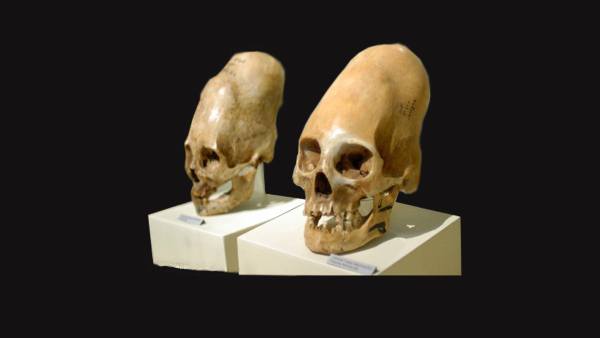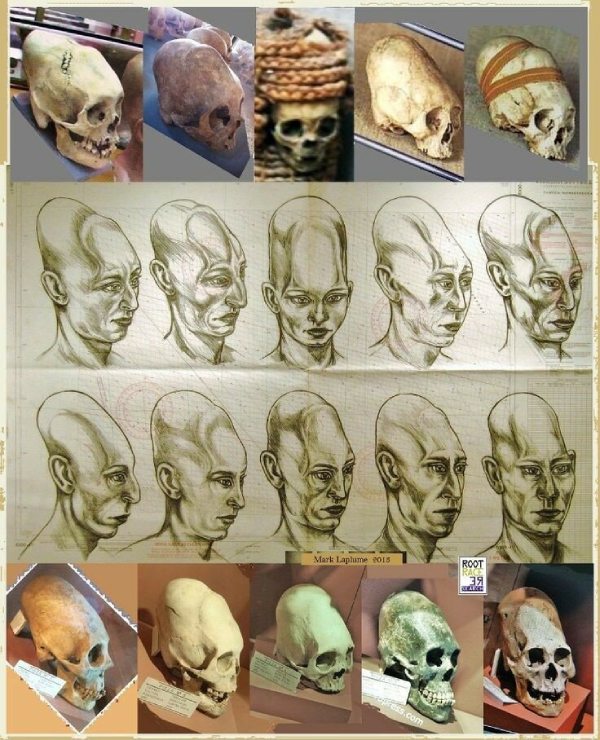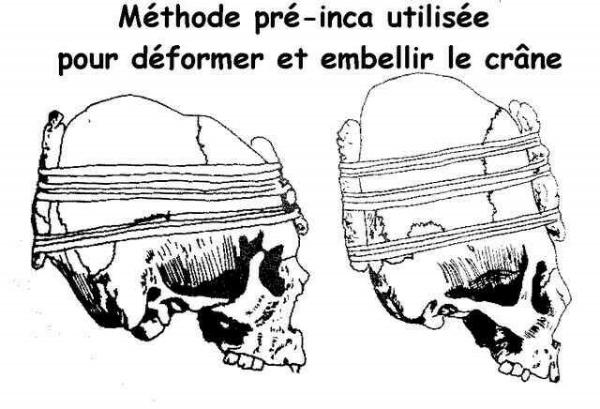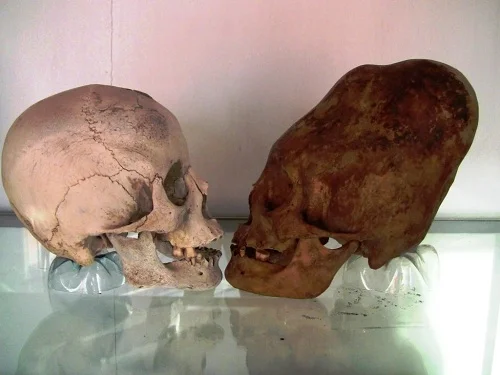What the DNA analysis of abnormal skulls found in Peru showed
What the DNA analysis of abnormal skulls found in Peru showed
Paracas is a desert peninsula that is located on the southern coast of Peru. In 1928, the archaeologist Julio Tello, 1928, found there the burial of people with abnormal skulls. They were displayed in the local historical museum and were given the name "skulls of Paracas". They are elongated in shape and their age is estimated at about 3 thousand years.

Disputes and discussions on the ownership of these skulls to humans lasted for a long time and to put an end to the dispute, it was necessary to conduct DNA analysis. And now this information has become available.

It is worth recalling that in a number of cultures, such stretching of the skull was widespread. The head was placed between 2 bars of wood or hard pads and tightly bandaged with a cloth. Children were born with this ritual and their still pliable skulls eventually deformed, taking on an elongated shape. At the same time, the weight and volume of the skull did not change. Historians attribute this tradition to the priests, for whom it was important to highlight their special religious status.

Surprisingly, some "skulls from Paracas" are increased in volume by up to 25% and 60% heavier than the "average" human skull. The volume of the brain of Homo Sapiens today is approximately 1,450 cubic cm, and in the skulls of Paracas, the volume varies from 2,200 to 3,200 cubic cm. For comparison, the largest skull recorded in the medical literature had a volume of 1,980 cubic cm.

Comparison of an ordinary human skull with a "Paracas" skull.
It follows that these skulls were not subjected to traditional deformation, which means that the mystery of their origin lies even deeper.
A member of the genetic laboratory, Brian Forster, has been studying these skulls for many years. The hair, teeth, and bones were thoroughly examined. In the course of the research, mitochondrial DNA was identified, with a mysterious mutation that can not be found in either humans or animals.
This mutation makes it possible to assume that we are dealing with a completely new humanoid being very far from intelligent man, Neanderthal man or Denisovian man. I'm not even sure that they will find a place in the family tree of modern man
explains Brian Forster.
Scientists have linked the skulls of Paracas to burials found in Russia between the Black and Caspian Seas. People with elongated skulls are periodically found in the Kuban. The results of the DNA analysis raised more questions than answers. But according to Brian Foster, another kind of man has appeared in archaeology - just a man.
About author:
Serg Toporkov Ufologist, Ph.D., blogger, I go on my own expeditions for UFOs. I use scientific methods to investigate the UAP phenomenon. Write to me |
Related tags:
skulls dna Peru analyssis abnormal ParacasRandom UFO or conspiracy article
The Vatican about aliens and UFOs
 Various senior Vatican officials have hinted that the Roman Catholic Church is preparing to disclose information about aliens and UFOs to the public for several months.
Various senior Vatican officials have hinted that the Roman Catholic Church is preparing to disclose information about aliens and UFOs to the public for several months.
